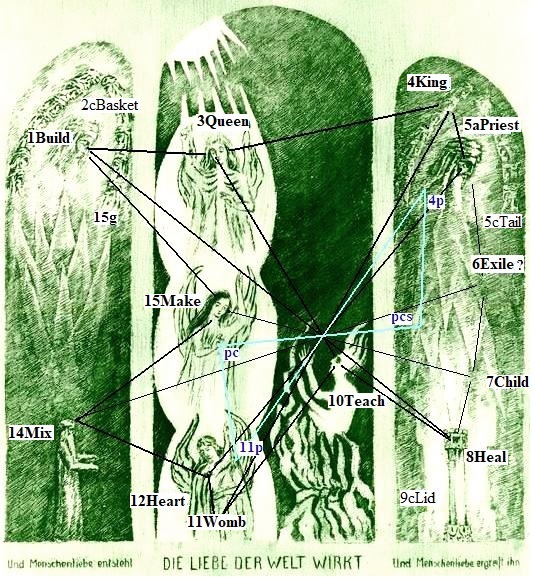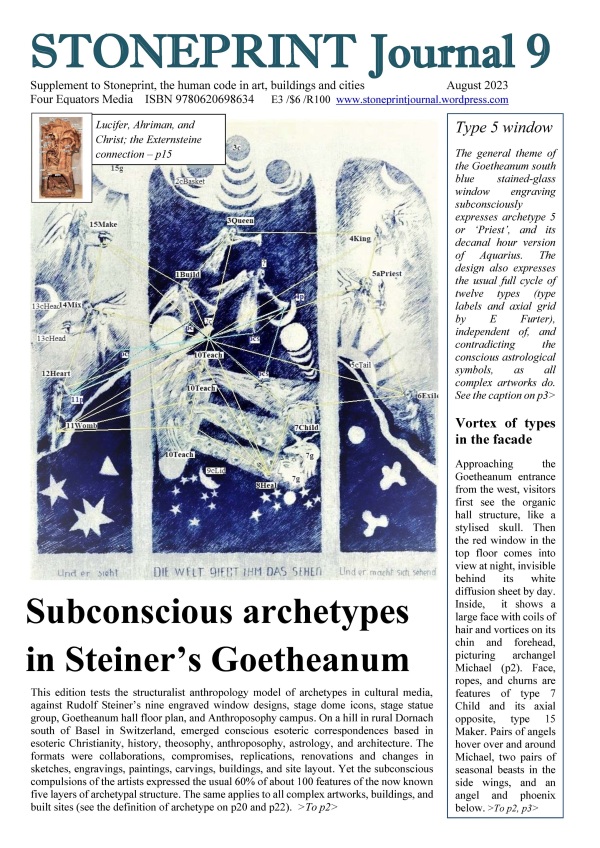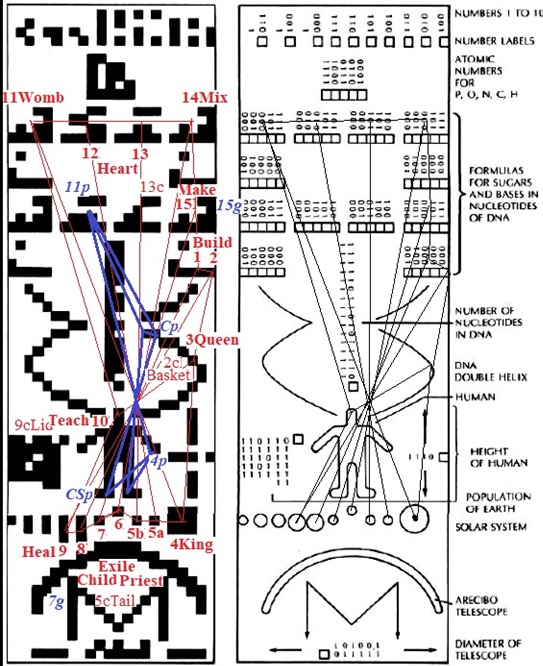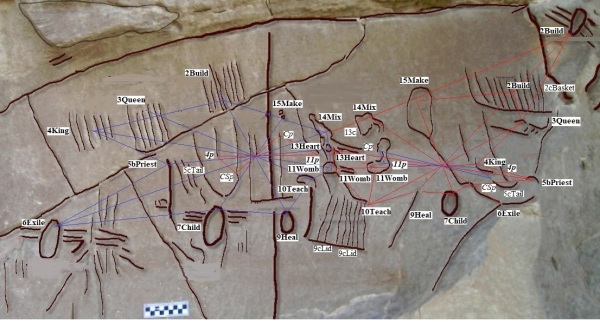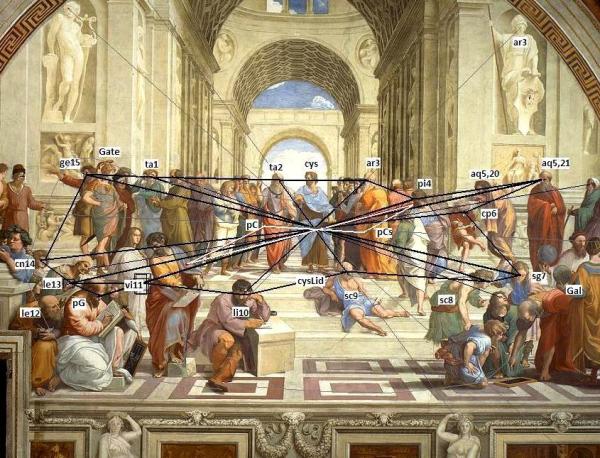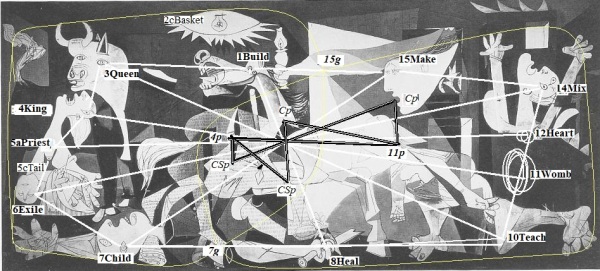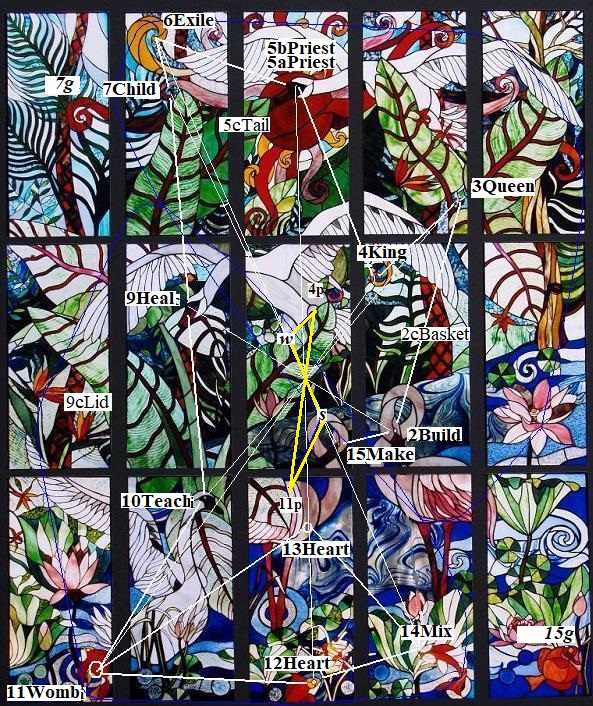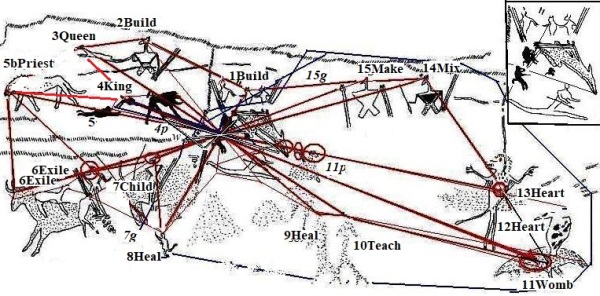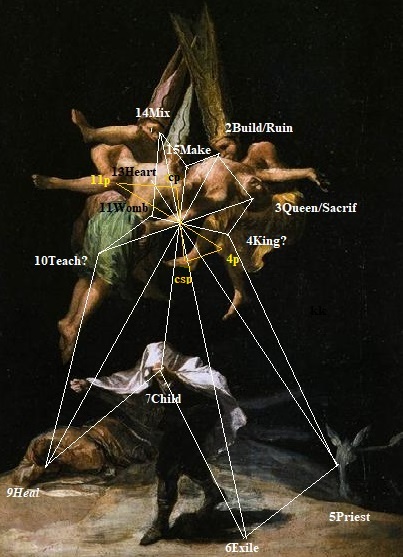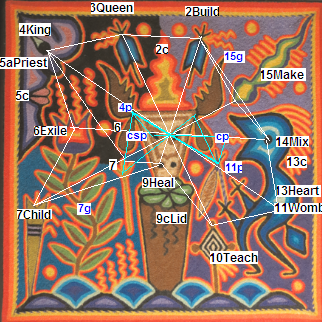The First or former Goetheanum's north green window engraving design, subconsciously expresses archetype 6, Exile or Scapegoat. Steiner’s rough sketch was detailed by Hilde Boos-Hamburger, and engraved by a team. This post identifies the subconscious archetypal cycle, and axial grid, in an engraved window. The same structure appears in all complex artworks. Steiner’s correspondence tables of seasons and classical ‘elements’ were unusual, but conscious and semi-conscious symbolic programmes seldom interfere with the subconscious structure.
Subconscious archetypes in Steiner’s Goetheanum
The Goetheanum South Blue window subconsciously expresses archetype 5 or ‘Priest’, and its decanal hour version of Aquarius. The design also expresses the usual full cycle of twelve types, independent of, and contradicting the conscious astrological symbols, as all complex artworks do.
Kharga oasis rock art map with two archetype cycles
In artworks, some of the subconscious archetypal features, and the axial grid between the focal points, are more standaradised and readable than the conscious ‘programme’ of the artist is. A weathered, semi-abstract engraving at Kharga Oasis in western Egypt expresses a double axial grid between the focal points of the main characters. These crops fields and stock corrals could be a map of the oasis area with its tax tallies. The main character is goddess Neith, and a pharaoh of lower northern Egypt.
Rafaello’s School of Athens poses artists as philosophers
Rafaello’s programme for some of his murals in the Vatican palace, including the School of Athens, was to picture various approaches to knowledge and wisdom. He pictured Athenian philosophers as a number of more or less coherent groups (astronomy, geometry, oratory, etc), but somewhat self-absorbed and incoherent. The building frame seems to say that Greek... Continue Reading →
Picasso’s Guernica as build and ruin, news and terror
Spanish Cubist artist Pablo Picasso rushed off a huge canvas themed on the Spanish Civil War and Nazi bombing atrocity at Guernica in 1937, for the Paris International Exhibition the same year. He loaned the work to a New York museum, providing that it be sent to Spain after democracy returned. Only in 1981 did the canvas go to Madrid, where it hangs in its own hall. The event remain infamous partly due to the most famous WWII theme painting. The artist subconsciously included the five layers of archetypal structure, as all artists, builders, and mythographers of all places and times do. This post demonstrates that the ‘grammar’ of meaning itself knows no exception between masters, gifted novices, rock artists, or cultural media.
Archetypes in Fassler’s tropical stained glass window for Kebble
Stephanie Fassler's tropical themed stained-glass window staircase façade for a Brett Kebble mansion in Johannesburg, has only nine living characters. The artist subconsciously used two sun ray spirals, and two fern tendron spirals, as ‘characters’. This kind of structuralist compromise is typical in minimalist artworks.
Giraffe X People, Lion People, Baboon People in rock art
Structuralist art analyses reveal the holographic or unified meanings inherent in inspiration and expression, and illustrate how artworks express meanings analogous to certain themes in myth, ritual, calendar and emblems. Art does not duplicate or arise from any other media. Every cultural medium is an independent, perpetual (never original) expression of the underlying structure of meaning that underpins matter and mind. Here is an example of Giraffe X People, Lion People, and Baboon People in a rock art panel.
Goya’s Witches in Flight, trance parody in a body-soul churn
Some academic or ‘decorative’ art continues the disturbing, surreal themes of rock art, ancient, Classical, religious and Renaissance art, such as trance visions, mythical and underworld scenes. The usual subconscious re-expression of the standard archetypal structure is also present in Goya’s Witches in Flight. The movie Trance (2013) hinges on this work to blur the life and imagination of a compulsive gambler, a hypnotherapist, and imaginary gangs of art dealers and robbers. The Matrix series (1999, 2003, 2021) also explore the eternal themes of trance and the underworld.
Mexican Huicol peyote art also expresses revelation
Some psychologists see trance hallucinations as having ”relatively autonomous self-organisation," and as “the very first origins of art”. But Mexican Huicol healing art that supposedly demonstrates 'culture from drugs', also subconsciously expresses about 54% of the known optional recurrent or archetypal features and spacing, or mindprint structure (Furter 2014), as all complex artworks do worldwide. The structuralist anthropology model resolves disputes about the supposed ‘origin, development, evolution’ diffusion and changes’ in art. Culture is an extension of nature.
